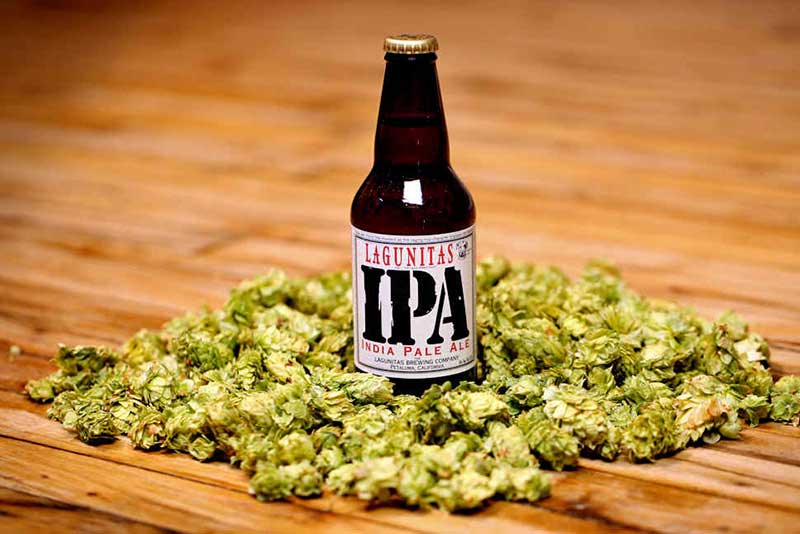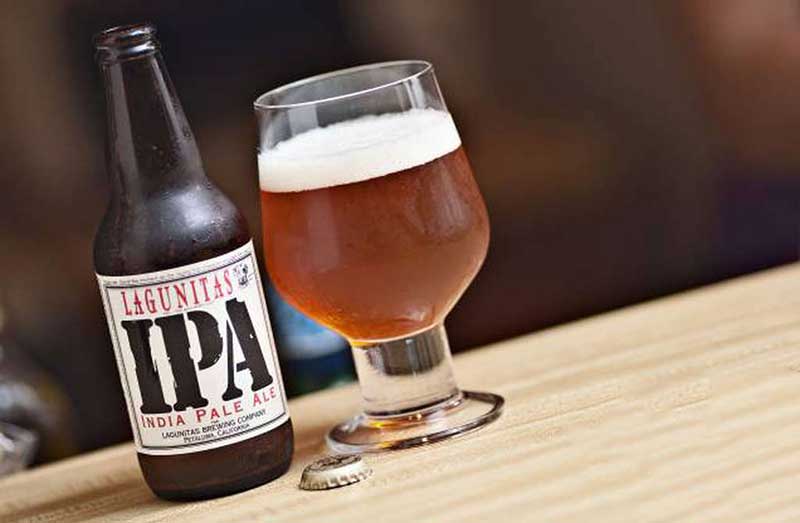IPA beers, also known as India Pale Ales, have become a staple in the craft beer world. These hop-forward beers offer a wide range of flavors, aromas, and appearances, making them a favorite among beer enthusiasts. In this article, iweddingdirectory will explore the different types of IPA beers and delve into their characteristics, brewing processes, food pairings, and more.
Types of IPA Beers
American IPA
American IPA is known for its bold hop flavor and high bitterness. It showcases a range of citrus, pine, and floral notes, with a medium to high alcohol content. The American IPA style has been influential in shaping the modern IPA landscape.
English IPA
English IPA, originating from the birthplace of IPAs, offers a more balanced and malty profile compared to its American counterpart. It features earthy, herbal, and fruity hop flavors, often complemented by a biscuity malt backbone.
New England IPA
New England IPA, or NEIPA, is characterized by its hazy appearance and juicy hop flavors. It emphasizes tropical fruit notes, low bitterness, and a creamy mouthfeel. NEIPAs are known for their intense hop aroma and vibrant flavors.
Belgian IPA
Belgian IPA combines the yeast characteristics of Belgian ales with the hop-forward nature of IPAs. It blends fruity, spicy yeast flavors with hoppy bitterness, creating a unique and complex drinking experience.
Black IPA
Black IPA, also called Cascadian Dark Ale, offers a twist on the traditional IPA style. It features roasted malt flavors along with the characteristic hop bitterness, resulting in a beer that balances the characteristics of a stout and an IPA.
Session IPA
Session IPA is a lighter and more sessionable version of the traditional IPA. It maintains hop-forward flavors and aromas while being lower in alcohol content. Session IPAs are often crisp, refreshing, and perfect for extended drinking sessions.
Double IPA
Double IPA, or Imperial IPA, takes the hop intensity of IPAs to the next level. It boasts higher alcohol content and an even more pronounced hop character. Double IPAs often exhibit bold citrus, resinous, and piney flavors.
Triple IPA
Triple IPA pushes the boundaries of hop-forward beers with its incredibly high alcohol content and intense hop flavors. This beer style offers a robust malt backbone to balance the potent hops, resulting in a strong and flavorful brew.
Characteristics of Each Type
Each type of IPA beer has its own unique flavor profile, aroma, and appearance. American IPAs tend to showcase citrus and pine flavors, while English IPAs offer more earthy and herbal notes. New England IPAs are known for their juicy and tropical fruit flavors, while Belgian IPAs combine fruity and spicy yeast flavors with hop bitterness. Black IPAs combine roasted malt flavors with hop bitterness, creating a dark and hoppy beer. Session IPAs maintain hop-forward characteristics with lower alcohol content, making them highly drinkable. Double IPAs and triple IPAs exhibit even stronger hop flavors and higher alcohol content.
Brewing Process
The brewing process of IPA beers involves specific ingredients and techniques to achieve their distinctive characteristics. Common ingredients include pale malts, various hop varieties, yeast, and water. Different hop varieties, such as Cascade, Centennial, and Citra, are used to impart specific flavors and aromas. The brewing process typically involves mashing the grains, boiling the wort, adding hops at different stages, fermenting the beer, and finally carbonating and packaging it.
Food Pairings
Pairing IPA beers with the right dishes can elevate the overall tasting experience. American IPAs go well with spicy foods, grilled meats, and strong cheeses. English IPAs complement pub-style dishes, fish and chips, and roasted meats. New England IPAs pair nicely with tropical fruit salads, seafood, and spicy Asian cuisine. Belgian IPAs are a great match for mussels, sausages, and creamy cheeses. Black IPAs go well with barbecue dishes, charcuterie boards, and chocolate desserts. Session IPAs are versatile and can be paired with lighter fare, such as salads, sandwiches, and seafood. Double IPAs and triple IPAs pair well with rich, flavorful dishes, such as spicy curries and aged cheeses.

IPA Beers and Popular Brands
When it comes to IPA beers, there are numerous popular brands that offer exceptional brews. Some well-known American IPA brands include Sierra Nevada Torpedo, Dogfish Head 60 Minute IPA, and Stone IPA. For English IPAs, Fuller’s India Pale Ale, Samuel Smith’s India Ale, and Greene King IPA are notable choices. New England IPA lovers might enjoy offerings from Tree House Brewing Company, Trillium Brewing Company, or The Alchemist’s Heady Topper. Belgian IPA options include Duvel Tripel Hop, Houblon Chouffe Dobbelen IPA Tripel, and La Chouffe Houblon Dobbelen IPA Tripel. Black IPA enthusiasts can explore beers like Founders Black Rye IPA, Stone Sublimely Self-Righteous Ale, and 21st Amendment Back in Black. Some well-regarded session IPAs are Lagunitas DayTime, Founders All Day IPA, and Oskar Blues Pinner Throwback IPA. Double and triple IPA enthusiasts can enjoy Pliny the Elder from Russian River Brewing Company, Hoptimum from Sierra Nevada, or Hopslam from Bell’s Brewery.
Craft Beer Culture
IPA beers have played a significant role in the growth and popularity of the craft beer movement. Craft breweries around the world have embraced the IPA style and created their own unique variations. The diversity and creativity within the IPA category have contributed to its enduring appeal among beer enthusiasts. IPA beers have become synonymous with the craft beer scene, often associated with innovation, flavor experimentation, and passionate brewing communities.
Health Benefits
Moderate consumption of IPA beers may offer potential health benefits. Hops, the key ingredient in IPAs, contain antioxidants that can help reduce inflammation and support cardiovascular health. However, it’s important to note that excessive alcohol consumption can have negative health effects, so it’s crucial to enjoy IPA beers responsibly and in moderation.

Common Misconceptions
There are several common misconceptions surrounding IPA beers. One misconception is that all IPA beers are extremely bitter. While bitterness is a characteristic of IPAs, different types of IPAs offer varying levels of bitterness, and some, like New England IPAs, focus more on hop flavor and aroma than on bitterness. Another misconception is that all IPAs have high alcohol content. While double and triple IPAs often have higher alcohol content, there are session IPAs and lower-alcohol IPAs available. It’s important to explore different styles to find the IPA that suits your preferences.
IPA Beers and the Global Market
IPA beers have gained popularity not only in their country of origin but also globally. Craft breweries worldwide have embraced the IPA style and put their own regional spin on it. In countries like the United States, the United Kingdom, Australia, and Canada, IPAs have become a staple in the craft beer market. Additionally, emerging beer markets in countries like Brazil, Japan, and Sweden are experiencing a growing interest in IPA beers. This global demand has led to a wide range of IPA styles and flavors available to beer enthusiasts around the world.
Future of IPA Beers
The future of IPA beers looks promising, with brewers continually pushing the boundaries of this beloved beer style. New styles and variations of IPAs continue to emerge, incorporating innovative brewing techniques and unique flavor combinations. Brewers experiment with different hop varieties, aging processes, and even barrel-aging to create exciting new IPA experiences. As the craft beer movement continues to thrive, IPA beers are expected to remain at the forefront of innovation and experimentation.
Conclusion
In conclusion, IPA beers offer beer lovers a diverse and exciting range of flavors, aromas, and appearances. From the bold and bitter American IPAs to the hazy and juicy New England IPAs, there is an IPA style to suit every palate. The brewing process, ingredient selection, and food pairings further enhance the enjoyment of IPA beers. With their rich history, global popularity, and constant evolution, IPA beers are a testament to the creativity and passion of craft brewers worldwide.
FAQs
Are all IPA beers bitter?
No, while bitterness is a characteristic of IPAs, different types of IPAs offer varying levels of bitterness. New England IPAs, for example, focus more on hop flavor and aroma rather than intense bitterness.
What is the alcohol content in IPA beers?
The alcohol content in IPA beers can vary. Session IPAs have lower alcohol content, typically ranging from 4% to 5.5% ABV (alcohol by volume). Double IPAs and triple IPAs can have higher alcohol content, ranging from 7% to 10% ABV or even higher.
Can IPA beers be aged?
IPAs are generally best consumed fresh to enjoy their hop-forward flavors and aromas. However, some hoppy beers, like double IPAs, can develop interesting flavors with age. It’s important to check the specific beer’s packaging or consult the brewery for recommendations on aging.
Are IPA beers gluten-free?
Most IPA beers are not gluten-free since they are typically brewed using grains that contain gluten, such as barley and wheat. However, there are gluten-free beer options available that mimic the flavors and characteristics of IPAs using alternative grains like sorghum or rice.
Can I homebrew my own IPA beer?
Yes, homebrewing an IPA beer is a popular and rewarding hobby for beer enthusiasts. There are numerous homebrewing kits, recipes, and online resources available to guide you through the process of brewing your own IPA beer at home.

















